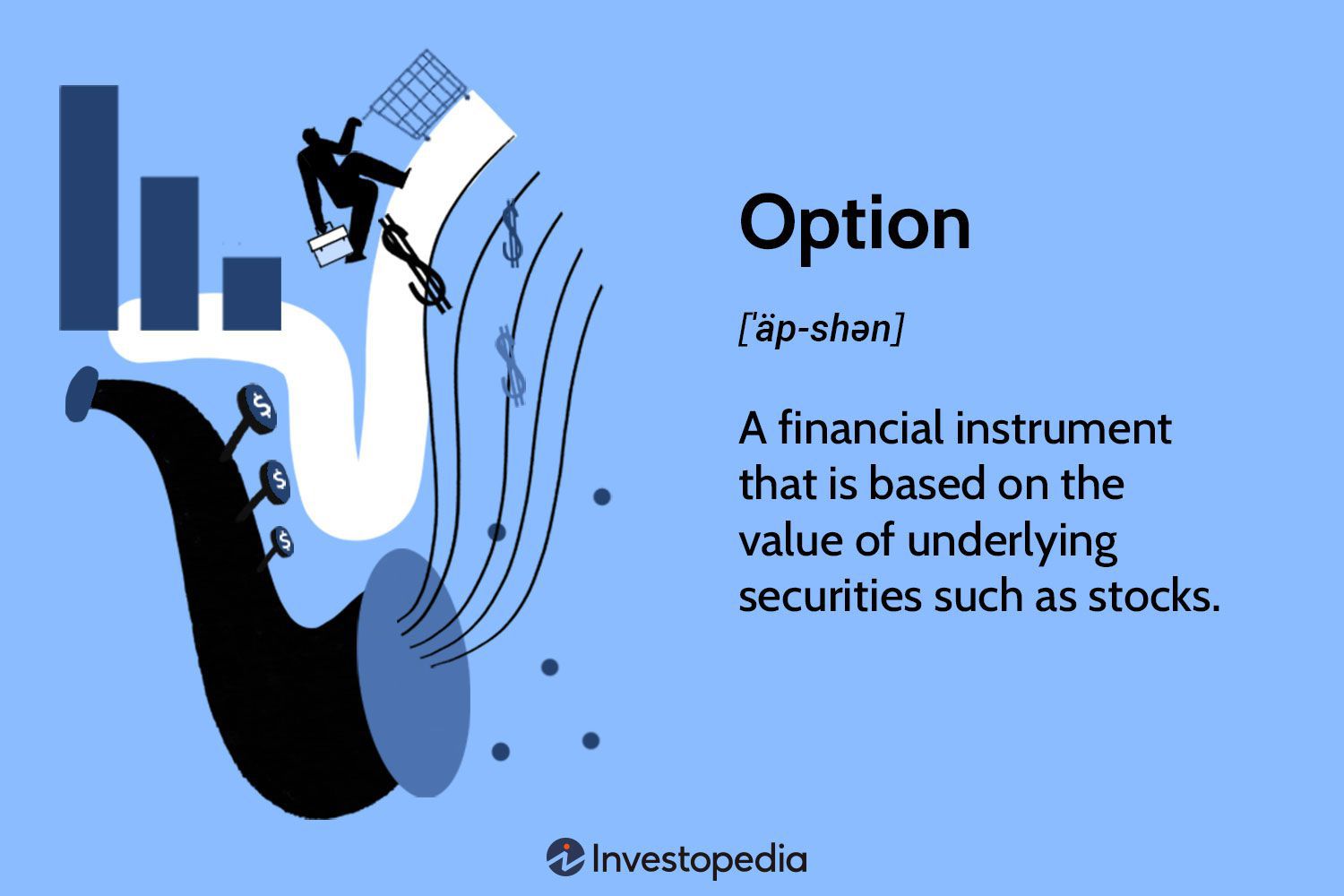Define Option

In the ever-evolving realm of finance, options trading stands as a fascinating and versatile tool for investors. Offering a unique set of opportunities and risks, options provide individuals with the ability to speculate on market movements, hedge existing positions, or generate income. Understanding the intricacies of options trading is crucial for anyone seeking to navigate the financial markets effectively. Let’s delve into the depths of options trading and unravel its complexities.
Defining Options:
Options are financial derivatives that grant the holder the right, but not the obligation, to buy or sell an underlying asset at a predetermined price (known as the strike price) within a specified time frame. These underlying assets can include stocks, commodities, currencies, or even other derivatives. Options contracts are typically traded on exchanges, providing liquidity and transparency to the market.
Types of Options:
There are two primary types of options: call options and put options. A call option gives the holder the right to buy the underlying asset at the strike price before the expiration date, while a put option grants the holder the right to sell the underlying asset at the strike price within the specified time frame. Within these categories, options can further be classified as American options, which can be exercised at any time before expiration, or European options, which can only be exercised at expiration.
Key Terminology:
To fully grasp the mechanics of options trading, one must become familiar with essential terms:
- Strike Price: The price at which the underlying asset can be bought or sold.
- Premium: The price paid by the option buyer to the seller for acquiring the option contract.
- Expiration Date: The date upon which the option contract expires.
- In-the-money (ITM), At-the-money (ATM), and Out-of-the-money (OTM): These terms describe the relationship between the current price of the underlying asset and the strike price.
- Implied Volatility: A measure of the market’s expectation of future volatility, which significantly impacts option prices.
Uses of Options:
Options offer a multitude of strategies catering to different investment objectives and risk appetites:
- Speculation: Traders can capitalize on market movements by buying call or put options, depending on their bullish or bearish outlook.
- Hedging: Investors can mitigate risk in their portfolios by purchasing options as insurance against adverse price movements.
- Income Generation: Through strategies like covered call writing, investors can generate income by selling options against existing stock holdings.
- Risk Management: Options provide flexibility in managing risk exposure, allowing investors to adjust their positions according to market conditions.
Risks and Considerations:
While options trading presents lucrative opportunities, it is not without risks:
- Limited Lifespan: Options contracts have a finite lifespan and can expire worthless if not exercised before expiration.
- Volatility Risk: Fluctuations in volatility can significantly impact option prices, potentially leading to substantial losses.
- Complexity: Options trading involves a steep learning curve, requiring a solid understanding of various strategies and market dynamics.
- Leverage: Options offer leverage, amplifying both gains and losses, which can result in significant financial exposure.
Conclusion:
Options trading is a multifaceted discipline that offers a diverse array of strategies for investors and traders alike. By mastering the fundamentals of options, individuals can harness its power to enhance their investment portfolios and achieve their financial goals. However, prudent risk management and a comprehensive understanding of market dynamics are paramount to success in the world of options trading. With diligence and perseverance, investors can unlock the full potential of options as a valuable tool in their financial arsenal.





